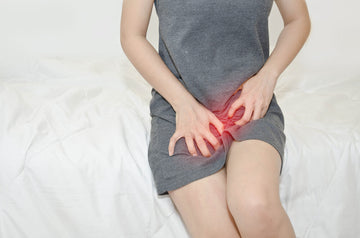Sanitary pads have dramatically changed from simple fabric solutions to technologically advanced products designed to meet the complex needs of today’s consumers. Initially focused on basic menstrual product care, updated pads emphasize improved comfort, good absorbency, and a suitable fit for different body types. Growing awareness of products and environmental issues has also led to sustainable innovations in biodegradable fibers and reusable options. New innovative technologies such as smart are combined with sensors and processes that do not provide the environment to meet these needs adequately. These innovations redefine menstrual hygiene products by prioritizing comfort, durability, and health, empowering users with safer, more effective, and environmentally responsible choices.
Current Challenges in Traditional Sanitary Pads
Environmental Impact:
Most traditional sanitary pads are made from synthetic materials and plastic, creating much environmental waste. The lack of biodegradability raises long-term sustainability concerns. These products can take hundreds of years to decompose in landfills. This ecological footprint has fueled the demand for more environmentally friendly alternatives to menstrual hygiene products.
Cause Discomfort:
Using conventional pads for a long time can cause skin irritation, rashes, and discomfort, especially for sensitive skin. The materials used in traditional pads often lack breathability, which leads to irritation. In addition, many users feel uncomfortable due to the large traditional pad designs, which result in lighter and more comfortable options.
Absorption Limitations:
Despite the improvement of traditional sanitation pads, they still lack consistent absorbency, especially during heavy flow periods. This can lead to leakage and discomfort, which can inconvenience users. Traditional pads usually struggle to provide long-term protection without reducing convenience or efficiency, emphasizing the need for more effective absorption technology in modern monthly products.
Innovations in Sanitary Pad Technology
Eco-Friendly Materials:
The brand uses biological and degradable materials such as organic cotton pads, plant-based fibers, and bamboo. These materials help reduce the environment by providing alternatives instead of traditional synthetic fibers. This helps reduce the accumulation of waste and supports the movement toward more environmentally friendly menstrual hygiene products.
Super-Absorbent and Thin Technology:
Innovative absorption technologies, such as Super Absorbent Polymers (SAPs), enable brands to design thinner, more efficient pads with superior leak protection. These advances help to provide better absorbency without compromising comfort. Allowing for a more discreet and reliable menstrual product, even during heavy flow days.
Skin-Safe and Hypoallergenic Features:
Many brands use organic cotton and non-allergenic materials to make sensitive skin comfortable. Antibacterial layers help prevent bacteria growth, reduce odour, and maintain hygiene, ensuring the user receives a safe menstrual care solution.
Smart Technologies:
Some brands are combining sensor-based technology with sanitary pads that monitor menstrual flow. These sensors connect to a mobile app to give users insights into their cycle patterns, provide a more personalized view of menstrual health, and help them seamlessly track and manage their periods.
Reusable and Sustainable Options:
Reusable pads and period underwear are popular as sustainable alternatives to disposable products. These options provide long-term cost savings, reduced waste, and reduced environmental impact, making them eco-friendly for consumers looking to use more sustainable menstrual care.
How Brands Are Leading The Way?
i). Integrating sanitary pads made from plant-derived materials and reusable options has enabled leading brands to help tackle the issue of plastic waste. Such initiatives ensure women have access to biodegradable and efficient menstrual care products, thus reducing the environmental impact.
ii). Brands engage with skin and reproductive specialists to develop their menstrual products, ensuring they are safe and achievable. Tenderness to the skin, diminished irritation, and health and hygiene are guaranteed to meet the best standards using this methodology.
iii). Consumer feedback drives innovation, enabling brands to create menstrual products that address unique body structures and skin features. These realizations help maximize comfort, fit, and versatility for many people.
iv). Providing eco-friendly, high-quality menstrual products at affordable costs shows the company's respect for focusing on the inclusivity of menstrual care among different socio-economic groups. Such strategies ensure the sustainability agenda is upheld.
Consumer’s Role in Driving Innovation
Demand for Sustainability:
Consumer concern about environmental issues has driven brands to prioritize eco-friendly materials and sustainable production methods. As awareness rises, consumers advocate for biodegradable and reusable options, prompting brands to adapt to these greener demands.
Feedback and Reviews:
Social media platforms and direct customer feedback provide invaluable insights for brands, enabling them to understand consumer needs more accurately. This real-time communication helps improve product offerings, making them more effective, comfortable, and tailored to customer preferences.
Advocacy for Health and Comfort:
Women’s health advocacy groups have been instrumental in demanding safer menstrual products. Consumers increasingly seek pads free from harmful chemicals and irritants and more comfortable options, prioritizing user health.
The Future of Sanitary Pad Technology
The top innovations in shaping the future of sanitary pad technology:
Health Monitoring and Smart Pads:
Integrating sensors into pads to track menstrual flow and provide health insights is a game-changer. These innovative pads can sync with mobile apps to offer personalized health data, helping users track their cycles and receive health tips, ultimately enhancing menstrual care with real-time monitoring.
Sustainability-Focused Materials:
As environmental concerns grow, biodegradable, plant-based, and reusable pads are gaining momentum. Future products will be crafted from eco-friendly materials to minimize plastic waste and support sustainable practices. Brands will likely continue innovating to offer zero-waste, compostable, and long-lasting options.
Enhanced Comfort and Customization:
Future pads will feature advanced designs for improved comfort, such as lightweight, flexible materials that better fit different body types and flow intensities. Customizable pads for optimal comfort will also prioritize breathability and moisture-wicking properties, ensuring a smoother, irritation-free experience.
Zero-Waste Production:
Reducing waste production in sanitary pads, reducing the environmental impact using biologically degradable materials, reducing waste, packaging, sustainable production processes, covering materials, plants, recycling, and manufacturing. This method provides solutions that care about the environment, reduce waste, and attract customers who care about the environment.
Conclusion
The sanitary pad industry is rapidly evolving as brands range from biodegradable plant-based materials to advanced absorbent technology, enhancing the user and environmental experience to meet the increasing demand for comfort, convenience, and comfort. Durable and health benefits Focusing on mitigation means that new technologies such as sensors and mobile app integration offer valuable health insights. At the same time, antimicrobials and skin sensitivities are prioritized. Health as consumer awareness increases. With friendly and effective monthly products and continued advancements in technology and materials, the future of sanitary pad products will focus on a broader range of accessible and mindful solutions, helping women manage their menstrual health safely and more sustainably.
FAQ’s
What Is The Future Of Sanitary Pads?
The future of sanitary pads includes eco-friendly materials, smart technologies, and personalized features. Innovations like biodegradable pads, health-tracking sensors, and advanced absorption systems will enhance comfort, sustainability, and user health management.
How To Make Sustainable Sanitary Pads?
Sustainable sanitary pads use biodegradable, organic materials like cotton, bamboo, or hemp. Minimizing waste, adopting eco-friendly production processes, and ensuring recyclable packaging are essential to creating environmentally responsible menstrual care products.
Which Type Of Pad Is Best?
The best sanitary pad depends on absorbency, comfort, and skin sensitivity preferences. Eco-friendly, breathable, and hypoallergenic pads offer superior comfort and sustainability, while high-absorbency pads are ideal for heavy-flow days.
What Material Is Needed To Make Sanitary Pads?
Sanitary pads are made from organic cotton, bamboo, hemp, super absorbent polymers (SAPs), and biodegradable plastic. These materials provide absorbency, comfort, and environmental sustainability, with organic cotton being a standard eco-friendly option.
What Are The Important Points About Sanitary Pads?
Important points include absorbency, comfort, skin safety, breathability, and environmental impact. Pads should be hypoallergenic, leak-resistant, and made with eco-friendly materials for consumer needs, including sustainability and health, drive pad technology, and design innovations.





